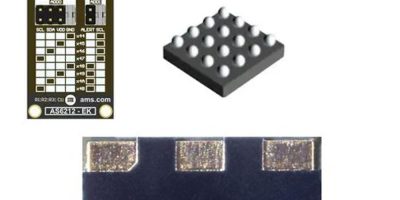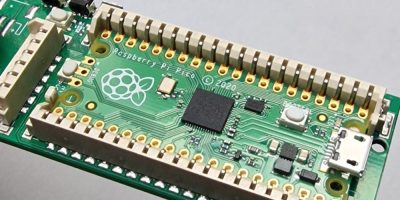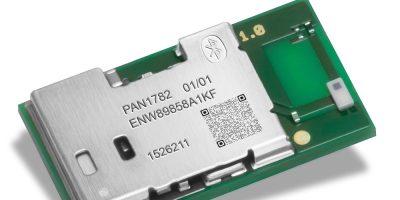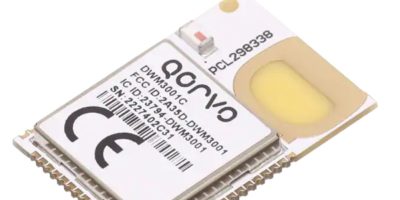Optical products for automotive, consumer, industrial and healthcare products by ams-Osram are available from Farnell.
New proximity, temperature and vital sign monitoring sensors and a comprehensive range of LEDs, photodiodes and infrared (IR) emitters by ams-Osram are available from Farnell.
The manufacturer has extended its distribution agreement with Farnell to offer optical products for sensing, visualisation and lighting applications from a single source.
The enhanced range of solutions from ams-Osram available for fast delivery from Farnell includes the AS621X series of temperature sensors which are claimed to deliver the industry’s best combination of accuracy and low power consumption in a tiny wafer-level package. It is suitable for a range of consumer electronic devices and wearables, heating, ventilation and air conditioning (HVAC) systems and health-related monitoring systems. The series consists of three models, including AS6212, AS6214 and AS6218, providing measurement with different temperature accuracies and low power consumption, said Farnell. The compact size of each sensor ensures ease of integration and can feature up to eight different I²C addresses, which permits eight AS6221T devices to be used on one bus with no calibration or linearisation needed.
The TMD3725 light, colour and proximity sensor offers reduced power consumption with design flexibility for dark room or full sunlight operation. Key features include advanced proximity measurement, colour sense (RGBC+IR) and digital ambient light sensing. The senor also compensates for unwanted IR energy system crosstalk reflection and undesirable ambient light photodiode current. The slim module incorporates an IR LED and factory calibrated LED driver with RGB + IR filters, high sensitivity down to mLux levels, a 1M:1 dynamic range and 0.18 micron processing technology with 1.8V I²C. The MD3725-EVM evaluation kit for the TMD3725 sensor provides everything required to evaluate the sensor.
There is also the TMD27553M ambient light / proximity photo sensor is optimised for narrow bezel mobile phones and offers industrial design flexibility, said Farnell. It has accurate ambient light sensing, superior proximity sensing and reduced power consumption. The proximity detection feature includes object recognition using photodiode detection of reflected IR energy (sourced by the integrated VCSEL). Detect and release events are interrupt driven and occur when the proximity result crosses the upper and / or lower threshold settings. The proximity engine features a wide range offset adjustment to compensate for unwanted IR energy reflection at the sensor. Moreover, the automatic ambient light subtraction with ALS (ambient light sensor) and IR photodiodes features dedicated data converters which have the capacity to produce 16-bit data. The extremely narrow 1.1mm module incorporates an IR VCSEL and factory calibrated VCSEL driver.
The AS7056 bio-signal analogue front end (AFE) sensor is the next generation of vital sign sensors enabling users to detect bio-signals such as PPG (photoplethysmogram) and PTT (pulse transit time) as well as proximity measurements. The AS7056 is an analogue front end optimised for size and performance to support space-limited applications, such as in-ear vital sign monitoring, hearables, optical sensor platform, fitness band, smart watch, smart patches and heart rate monitors. Optical blood pressure measurements and SpO2 are enabled by the two independent working photodiode inputs of the AS7056. The AS7056 also provides two LEDs and one VCSEL driver outputs and samples up to three photodiode inputs.
Customers can now buy the full range of ams OSRAM’s optical solutions with fast delivery from Farnell in EMEA, Newark in North America and element14 in APAC.







